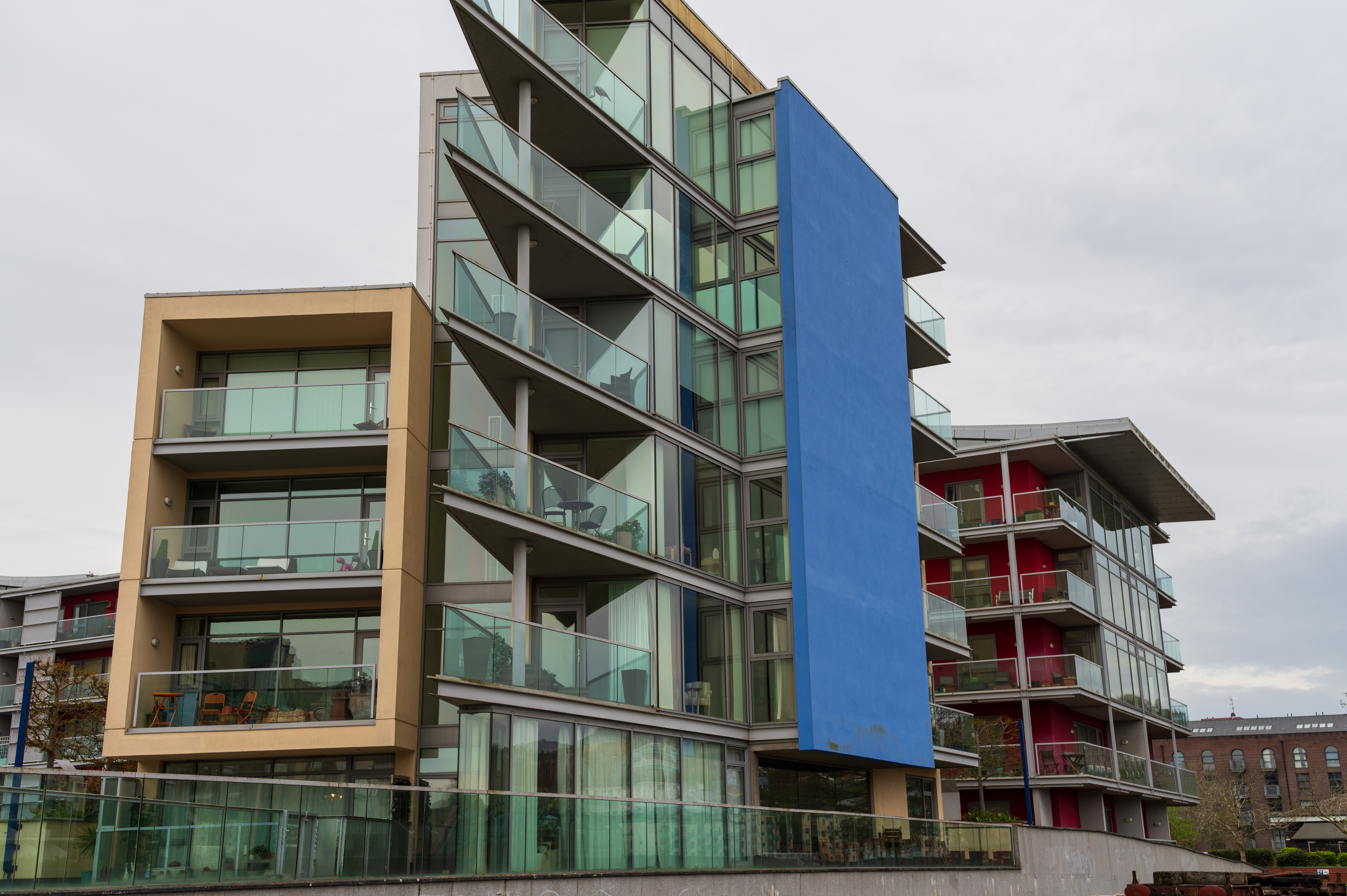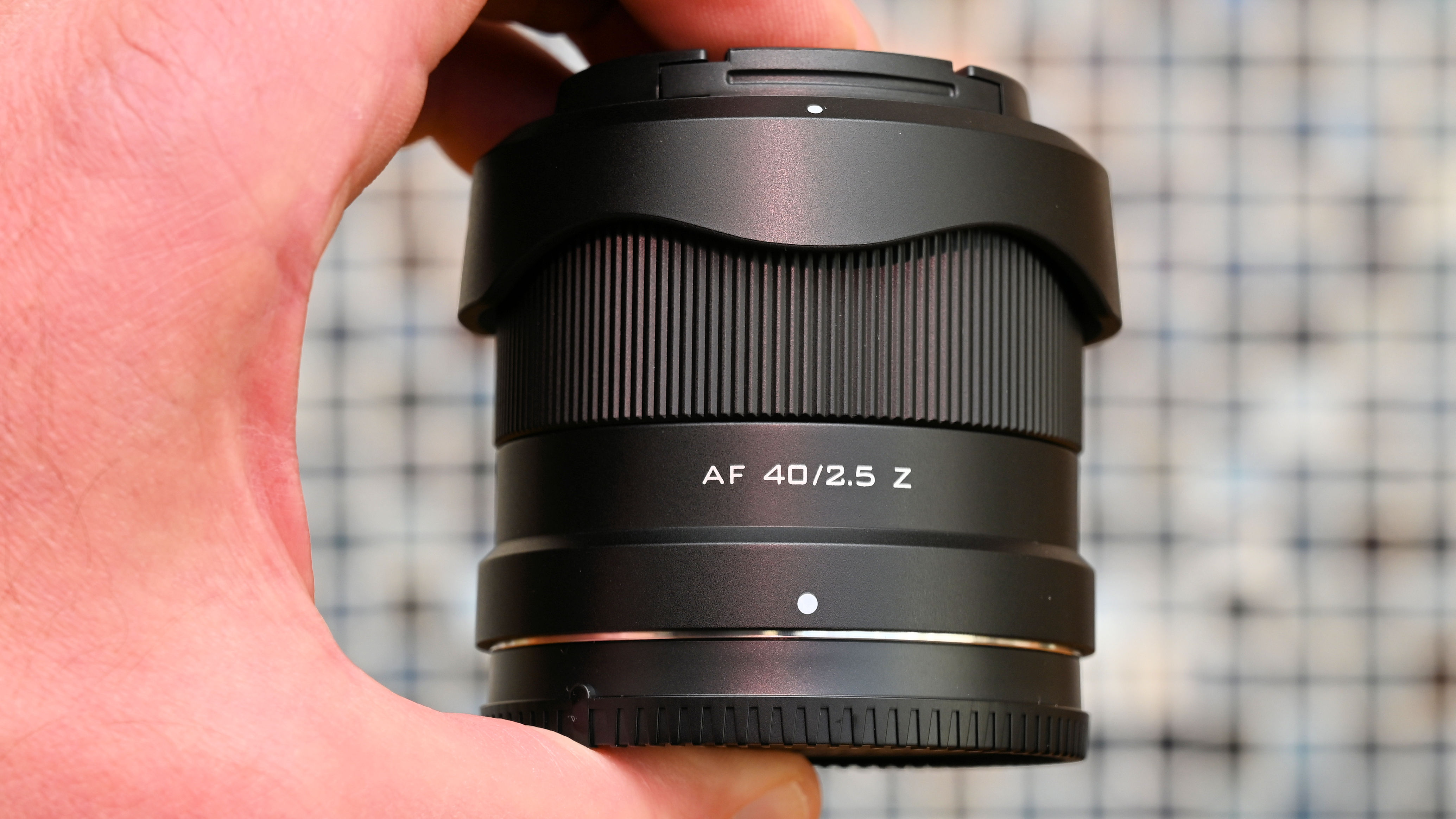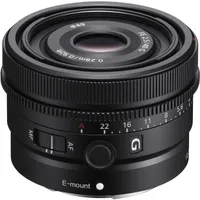Digital Camera World Verdict
I really like the focal length of 40mm for street photography and everyday shooting, and the Viltrox AF 40mm F2.5 obliges. I love that it’s so compact and lightweight, yet well built and with respectable performance, all at a very affordable purchase price. Bargain!
Pros
- +
Compact and lightweight
- +
Good performance
- +
Very inexpensive to buy
Cons
- -
No AF/MF switch
- -
No aperture control ring
- -
Not weather-sealed
Why you can trust Digital Camera World
For me, the focal length of the Viltrox AF 40mm F2.5 neatly bridges the gap between a 50mm standard prime and a moderately wide-angle 35mm lens. I find it gives an ideal perspective for street photography and walkabout shooting, and that its compact, lightweight build makes it very easy to live with. Naturally, you can also use the lens on APS-C format Nikon Z or Sony E bodies, where it gives an ‘effective’ 60mm focal length.
I’m not one to be fooled into thinking that ‘cheap’ Chinese lenses are second-rate. I actually own all three of the compact yet fast, metal-bodied Viltrox AF 23mm F1.4 Z, Viltrox AF 33mm F1.4 Z, and Viltrox AF 56mm F1.4 Z primes, plus the slightly larger Viltrox AF 13mm F1.4 Z and the faster Viltrox AF 27mm F1.2 Pro, both of which are also metal-bodied. They’re all APS-C format lenses which I use on my Nikon Z fc and I’m continually delighted with them, one and all. Following on from the recently released Viltrox AF 20mm F2.8, the new AF 40mm is full-frame compatible and aims to be one of the most affordable of lenses for Nikon Z and lenses for Sony E.
Viltrox AF 40mm F2.5: What's changed?
Viltrox is a well-established brand for photographic lighting and other accessories, and has more recently been ramping up its production of lenses in various mount options. Thus far, most of the lenses released by the company have been for crop-sensor cameras and feature aperture control rings. The AF 40mm is a more pared-back lens without an aperture ring, ideally suited to full-frame Nikon and Sony mirrorless cameras.
Viltrox AF 40mm F2.5: Specifications
| Mount options | Nikon Z, Sony E (FE) |
| Lens construction | 10 elements in 6 groups |
| Angle of view | 57.8 degrees |
| Diaphragm blades | 7 |
| Minimum aperture | f/16 |
| Minimum focus distance | 0.34m |
| Maximum magnification | 0.14x |
| Filter size | 52mm |
| Dimensions | 68x56mm |
| Weight | 180g |
Viltrox AF 40mm F2.5: Price & Availability
Availability of the Nikon Z-mount version of the full-frame Viltrox AF 40mm F2.5 lens is from the end of April 2024, with the Sony E-mount version due to follow a month or two later. The APS-C format 23mm, 33mm and 56mm APS-C lenses all have a faster aperture of f/1.4 and cost around £249/$299 each. The AF 40mm lens needs to produce a larger full-frame image circle but has a slower f/2.5 aperture rating and lacks an aperture control ring. It has a rock-bottom selling price of around £165/$158, similar to that of the companion Viltrox AF 20mm F2.8.
Viltrox AF 40mm F2.5: Design & Handling
I’ve always felt that a key advantage of any ‘interchangeable lens’ camera system is that I can fit the right tool for the job to the camera body. I often think that f/2.8 zoom lenses feel big and heavy, especially for relatively compact system cameras compared with hefty DSLRs. I like being able to carry two or three small and lightweight prime lenses, which often have a much faster aperture. I can’t really say that about the Viltrox AF 40mm F2.5, which is only one-third of an f/stop faster than an f/2.8 lens, and it’s actually two-thirds of an f/stop slower than the competing Nikon Z 40mm F2 prime. For Nikon Z camera owners, it’s an interesting comparison.
The Nikon lens is nearly half an inch shorter than the Viltrox but only 10g lighter in weight, despite having a plastic mounting plate, whereas the Viltrox has a metal plate. The Viltrox also comes with a petal shaped, bayonet-fit hood, whereas Nikon only offers a screw-in hood as an optional extra. And the Nikon lens is considerably more expensive to buy, with a list price of around £259/$297. Both lenses have a 52mm filter attachment thread.
The best camera deals, reviews, product advice, and unmissable photography news, direct to your inbox!
Handling feels very similar to the competing Nikon Z 40mm lens. There’s no AF/MF switch, so you need to dip into camera menus to make the change. The lens also lacks the aperture control ring that’s featured in the APS-C format Viltrox lenses I mentioned earlier. Personally, I don’t mind that. While the de-clicked aperture ring in the other lenses is handy when shooting video, there’s no firm click between the Auto setting, in all but the 27mm Pro lens, and I find it’s all too easy to nudge it accidentally from its Auto position to a really narrow aperture setting.
Viltrox AF 40mm F2.5: Photo Performance
You’re unlikely to go for a compact, lightweight, cut-price lens if you’re in the market for ultimate image quality and all-round performance. However, the Viltrox is nice and sharp across most of the image frame, even wide-open at f/2.5, only dropping off towards the extreme edges and corners, where I’d still rate it as entirely acceptable. Corner-sharpness is actually better than from the competing Nikon Z 40mm f/2 lens, although the Nikon picks up better for corner-sharpness at apertures of f/4 and narrower.
Color fringing can be quite noticeable towards the edges and corners of the frame but are effectively eliminated by in-camera corrections in both Nikon and Sony cameras. There’s a touch of barrel distortion but I didn’t feel the need to apply in-camera or post corrections for the example shots I took while testing.
The linear (lead-screw) stepping motor for autofocus is fast and typically near-silent. In my tests with a Nikon Z 6II, I found that autofocus worked well with face/eye detection and was well able to keep pace with moving subjects in continuous autofocus mode. Manual focusing via the electronically coupled control ring is smooth and precise. In both AF and MF focus modes, the lens can focus down to a minimum distance of 0.34m, giving a maximum magnification ratio of 0.14x.
The combination of 40mm focal length and f/2.5 aperture enables a pretty tight depth of field when shooting close-ups. Bokeh is quite smooth and bokeh disks from defocused lights remain well-rounded when stopping down a little, despite the aperture diaphragm only having a modest number of seven blades. Again, for the sake of comparison, the Nikon lens has a nine-blade aperture diaphragm.
Viltrox AF 40mm F2.5: Sample Images
This gallery of example shots was taken on an overcast morning in and around the floating harbor at Bristol, UK.
















Viltrox AF 40mm F2.5: Lab Results
We run a range of lab tests under controlled conditions, using the Imatest Master testing suite. Photos of test charts are taken across the range of apertures and zooms (where available), then analyzed for sharpness, distortion and chromatic aberrations.
We use Imatest SFR (spatial frequency response) charts and analysis software to plot lens resolution at the center of the image frame, corners and mid-point distances, across the range of aperture settings and, with zoom lenses, at four different focal lengths. The tests also measure distortion and color fringing (chromatic aberration).
Sharpness:
Our lab tests revealed excellent levels of sharpness across most of the image frame, from wide-open at f/2.5 down to f/11. Sharpness at the extreme edges and corners of the frame aren’t so impressive but still perfectly acceptable.
Fringing:
There’s a little color fringing towards the edges and corners of the image frame that remains of a fairly consistent level throughout the aperture range. In practice, it’s eliminated by the automatic in-camera correction of Canon and Nikon cameras.
Distortion: -0.44
Unlike many compact lenses designed for mirrorless cameras, there’s almost no reliance on in-camera correction for distortion. There’s a touch of barrel but it’ll generally go unnoticed even when shooting architectural subjects with lots of straight lines.
Viltrox AF 40mm F2.5: Verdict
I’m a sucker for a bargain, which is why I already have so many Viltrox lenses in my personal collection. The AF 40mm f/2.5 is the first full-frame lens from the company that I’ve used. Handling is relatively basic, without an aperture control ring, but it’s nice and small and lightweight. Image quality and all-round performance are very respectable, making it standout value for a full-frame lens at the incredibly affordable asking price.
Should you buy the Viltrox AF 40mm F2.5?
✅ Buy this...
- Compact and lightweight
- Versatile focal length
- Very inexpensive
🚫 Don't buy this...
- f/2.5 aperture isn’t the fastest
- No optical stabilization
- No aperture control ring
Alternatives
The Nikon Z 40mm F2 has a faster aperture rating but is significantly more expensive to buy, and has a plastic rather than metal mounting plate. As with the Viltrox lens, the lack of optical stabilization can be a problem if you’re using it on Z DX bodies that lack IBIS.
For Sony shooters, the Sony FE 40mm F2.5 G is a more sophisticated lens that features an aperture control ring, customizable AF-hold button and AF/MF switch. However, it’s much more expensive to buy at around £629/$598.
Matthew Richards is a photographer and journalist who has spent years using and reviewing all manner of photo gear. He is Digital Camera World's principal lens reviewer – and has tested more primes and zooms than most people have had hot dinners!
His expertise with equipment doesn’t end there, though. He is also an encyclopedia when it comes to all manner of cameras, camera holsters and bags, flashguns, tripods and heads, printers, papers and inks, and just about anything imaging-related.
In an earlier life he was a broadcast engineer at the BBC, as well as a former editor of PC Guide.


















